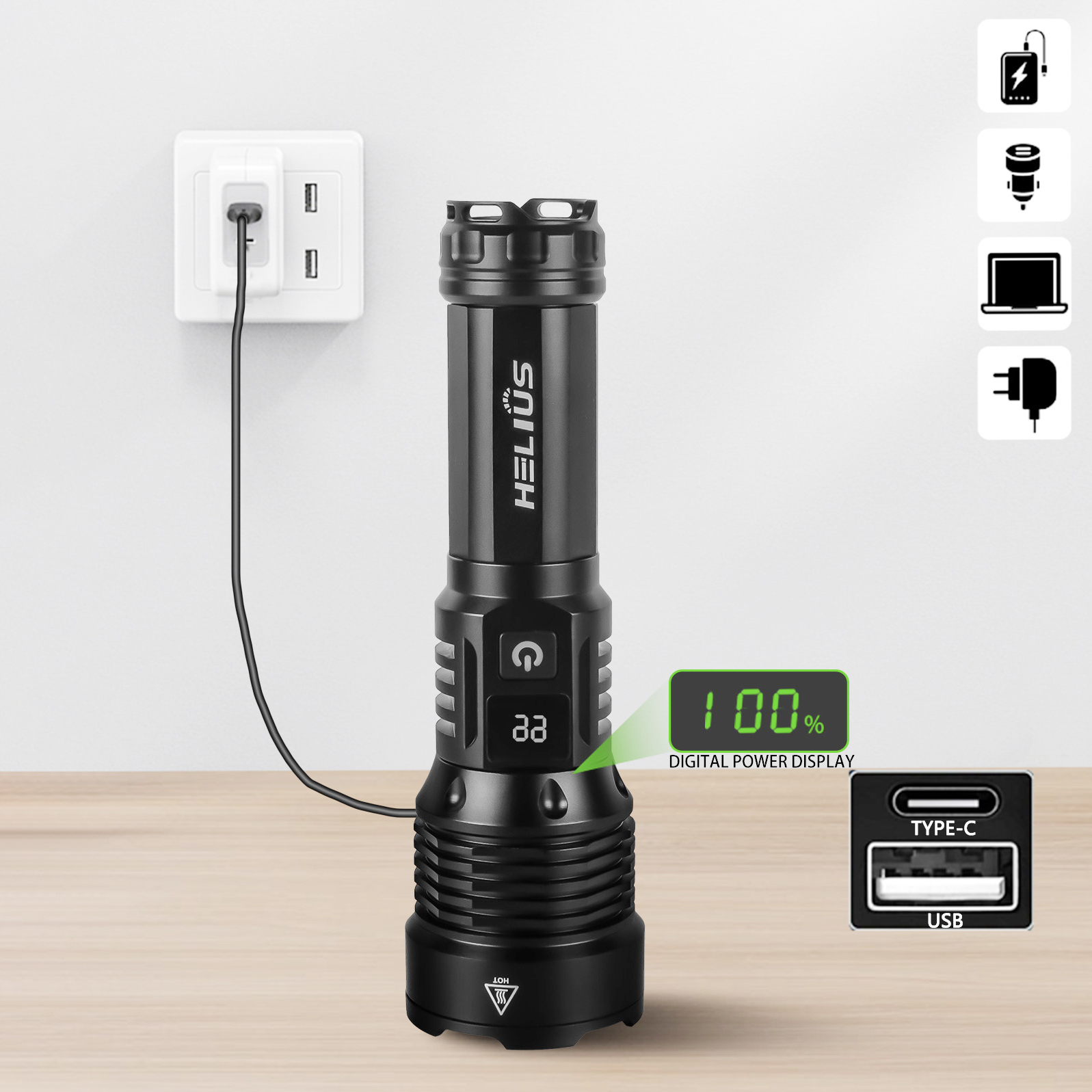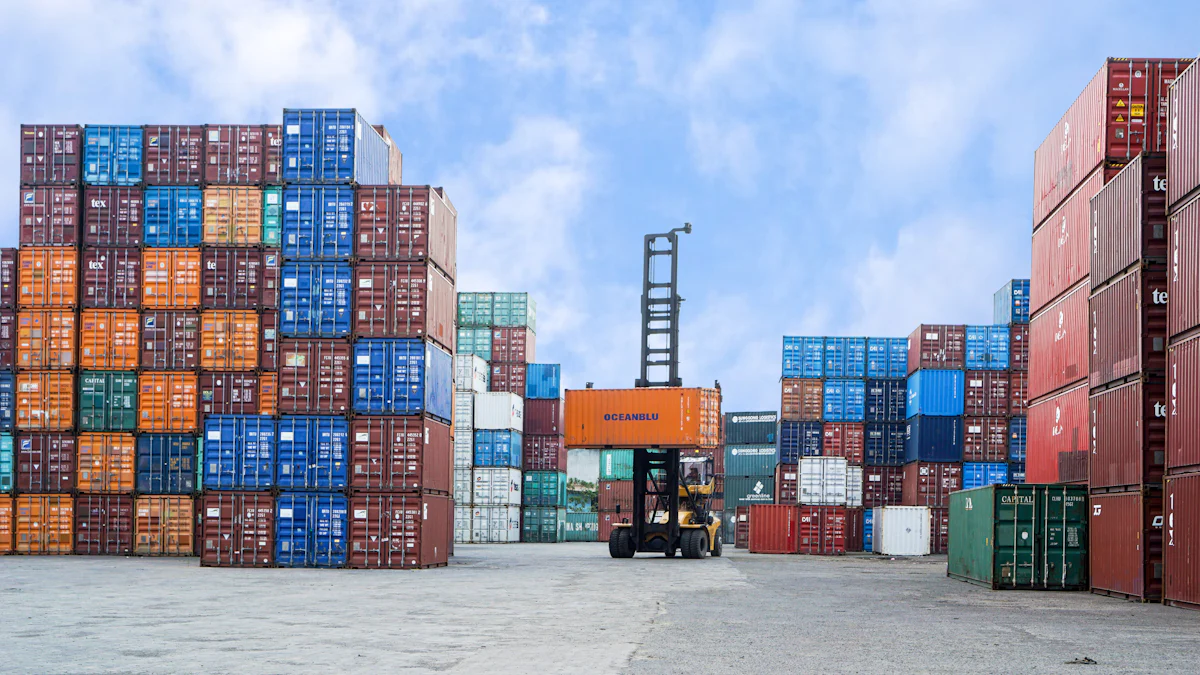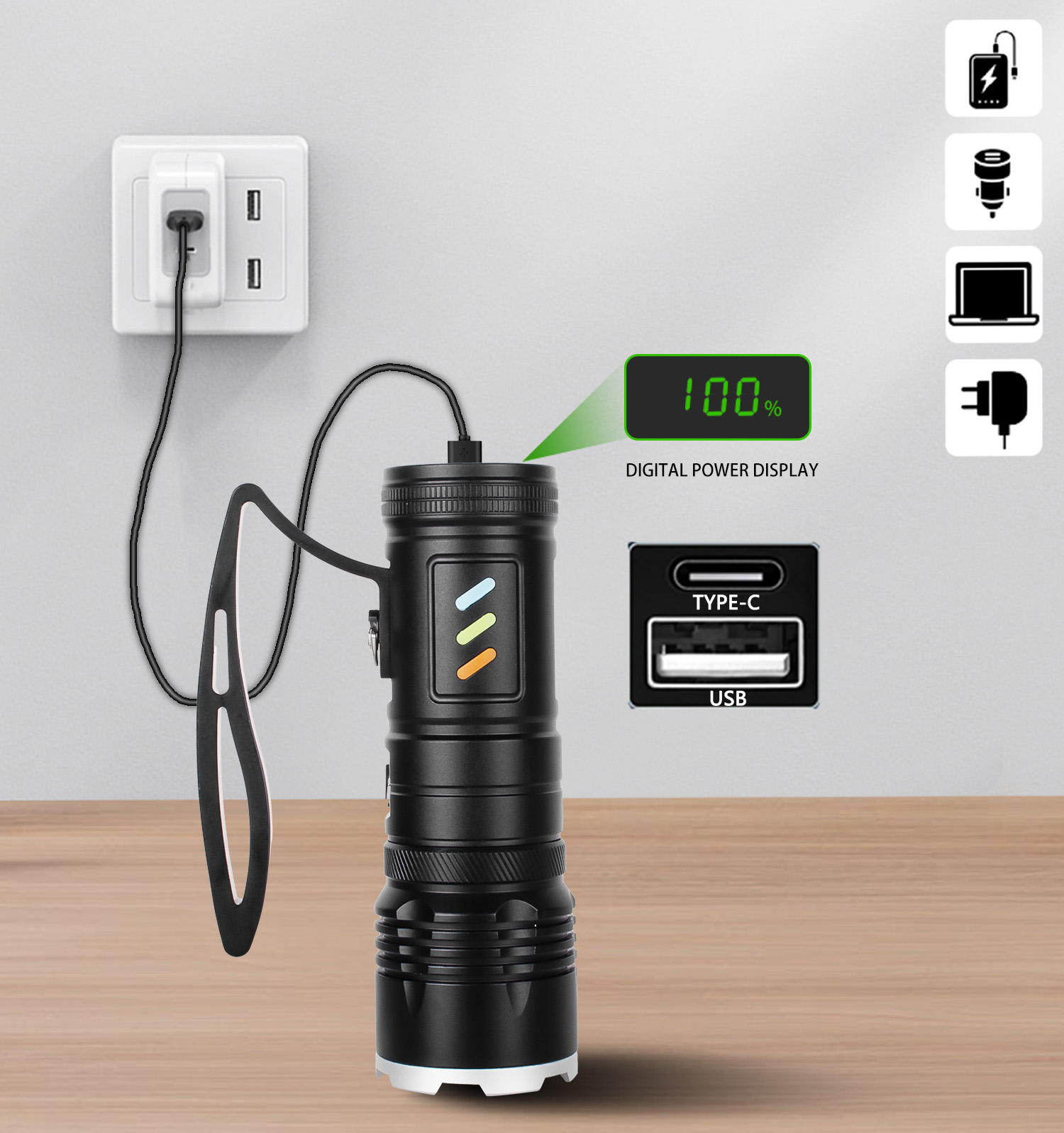How Import Regulations Affect Flashlight Supply Chains

Import regulations play a critical role in shaping flashlight supply chains. These rules determine how businesses source materials, manufacture products, and distribute them globally. Companies often face challenges such as higher costs, stricter compliance requirements, and operational delays. However, these obstacles can drive innovation and improve efficiency.
Understanding how import regulations affect flashlight supply chains enables businesses to adapt their strategies effectively. By addressing these challenges, they can remain competitive in a dynamic global market.
Key Takeaways
Rules for imports, like tariffs, affect flashlight costs and plans.
Following customs rules is important. Correct papers prevent delays or fines.
Laws on fair work ensure products are made without forced labor. This builds trust and a good brand image.
Meeting safety and eco-friendly rules helps the planet and boosts sales.
Using new tech and having many suppliers helps handle rule changes and keep supply chains strong.
Key Import Regulations Shaping the Flashlight Supply Chain

Tariffs and Trade Policies
Tariffs and trade policies significantly influence flashlight supply chains. Governments impose tariffs to regulate imports and protect domestic industries. A complex tariff structure can increase the cost of raw materials and finished products. For flashlight manufacturers, these added costs often lead to higher prices for consumers. Trade policies, such as free trade agreements or restrictions, also shape sourcing decisions. Companies must evaluate these policies to ensure trade compliance and maintain profitability. Understanding how import regulations affect flashlight supply chains helps businesses adapt to these financial and operational challenges.
Customs Regulations and Documentation
Customs regulations govern the movement of goods across borders. These rules require businesses to provide accurate documentation, such as invoices, certificates of origin, and shipping details. Non-compliance with customs regulations can result in delays, fines, or even seizure of goods. Efficient customs processes are essential for maintaining a smooth supply chain. Companies often invest in customs and trade compliance tools to streamline import compliance. These tools help businesses navigate complex customs processes and reduce the risk of errors. Adhering to customs regulations ensures timely delivery and minimizes disruptions in the supply chain.
Forced Labor and Ethical Sourcing Laws
Ethical sourcing laws, such as the Uyghur Forced Labor Prevention Act, aim to eliminate forced labor from global supply chains. These laws require businesses to prove that their products are free from forced labor. For flashlight manufacturers, this means auditing suppliers and ensuring compliance with supply chain laws. The Uyghur Forced Labor Prevention Act has heightened scrutiny on imports from regions linked to forced labor. Companies must enhance transparency and implement robust import control measures to meet these requirements. Ethical sourcing not only ensures compliance but also builds consumer trust and brand reputation.
Environmental and Safety Standards
Environmental and safety standards play a crucial role in shaping flashlight supply chains. These regulations ensure that products meet sustainability goals and protect consumer health. Manufacturers must adapt their processes to comply with these standards, which often impacts costs, design, and operations.
Environmental regulations influence material selection in flashlight production. Manufacturers must prioritize eco-friendly materials, which can increase production costs. For example:
Sustainable materials often cost more than traditional alternatives.
Certain metals or plastics may be restricted due to their environmental impact.
Replacing restricted materials requires research and development, adding to expenses.
Sustainability standards also affect manufacturing processes. Companies must adopt energy-efficient methods and reduce waste during production. These changes may alter flashlight designs to meet regulatory requirements. For instance, manufacturers might redesign products to use fewer materials or incorporate recyclable components.
Battery disposal regulations further impact flashlight supply chains. Improper disposal of batteries can harm the environment. To address this, manufacturers must develop safe disposal methods or create recycling programs. These efforts increase operational costs but align with global sustainability goals.
Safety standards ensure that flashlights meet quality benchmarks and protect users. Regulations may require testing for durability, water resistance, or electrical safety. Non-compliance can lead to product recalls or legal penalties, disrupting supply chains.
Adhering to environmental and safety standards benefits businesses in the long term. Compliance enhances brand reputation and builds consumer trust. Companies that prioritize sustainability and safety gain a competitive edge in the market.
By integrating these standards into their operations, flashlight manufacturers can contribute to a greener and safer future.
Challenges of Import Regulations in Flashlight Supply Chains
Sourcing and Procurement Constraints
Import regulations often create significant challenges in sourcing and procurement for flashlight manufacturers. Restrictions on specific materials, such as metals or plastics, can limit the availability of essential components. Ethical sourcing laws further complicate procurement by requiring businesses to verify that suppliers comply with labor and environmental standards. These constraints force companies to seek alternative suppliers or materials, which can increase costs and extend lead times.
For example, sourcing eco-friendly materials to meet environmental regulations may require additional research and development. This process not only raises production costs but also delays manufacturing schedules. Businesses must carefully evaluate suppliers to ensure compliance with import laws while maintaining the quality and affordability of their products.
Delays in Supply Chain Operations
Delays are a common consequence of stringent import compliance requirements. Customs inspections, documentation errors, and regulatory changes can disrupt the smooth flow of goods. Flashlight manufacturers often face extended lead times when shipments are held at customs for verification. These delays can result in missed deadlines, reduced inventory levels, and dissatisfied customers.
To mitigate these issues, businesses must streamline their supply chain processes. Investing in technology, such as automated tracking systems, can help monitor shipments and reduce delays. Proactive planning and maintaining buffer stock can also minimize the impact of unexpected disruptions.
Compliance and Documentation Burdens
Meeting import compliance requirements involves extensive documentation and adherence to complex regulations. Businesses must prepare accurate invoices, certificates of origin, and other paperwork to avoid penalties or shipment rejections. This process can be time-consuming and prone to errors, especially for companies managing multiple suppliers and markets.
Intelligent automation offers a practical solution to reduce the burden of compliance. By automating customs processes, businesses can improve efficiency and accuracy without increasing overhead costs. Automation promotes transparency by maintaining accurate records for audits and simplifies operations by centralizing compliance tasks. It also mitigates risks by reducing vulnerabilities in manual data entry and enhances security. Additionally, businesses can leverage automation to utilize Free Trade Agreements and other regulatory benefits effectively.
Streamlining compliance processes not only reduces operational burdens but also ensures that businesses remain competitive in a regulated market.
Adapting to Regulatory Changes
Adapting to evolving regulations requires flashlight manufacturers to remain agile and proactive. Regulatory changes often impact multiple aspects of the supply chain, including sourcing, production, and distribution. Businesses must implement strategies to ensure they meet import compliance requirements while maintaining operational efficiency.
One effective approach involves monitoring regulatory updates. Companies should track changes in trade policies, environmental standards, and ethical sourcing laws. Staying informed allows businesses to adjust their supply chain processes before new rules take effect. For example, subscribing to government bulletins or partnering with trade associations can provide timely updates on import compliance requirements.
Training employees on compliance procedures is another critical step. Staff members responsible for supply chain operations should understand the latest regulations and how they affect day-to-day activities. Regular training sessions help employees identify potential risks and ensure accurate documentation. This reduces the likelihood of errors that could lead to delays or penalties.
Investing in technology also supports regulatory adaptation. Automated systems can streamline import compliance tasks, such as generating accurate documentation and tracking shipments. These tools reduce manual errors and improve efficiency. For instance, software solutions can flag non-compliant materials or suppliers, enabling businesses to address issues before they escalate.
Diversifying the supply chain further enhances resilience. Relying on a single supplier or region increases vulnerability to regulatory changes. By sourcing materials from multiple suppliers across different regions, businesses can mitigate risks and maintain steady production.
Adapting to regulatory changes is essential for long-term success. Companies that prioritize compliance and flexibility can navigate challenges effectively and maintain a competitive edge in the global market.
Strategies to Navigate Import Regulations
Enhancing Supply Chain Transparency
Improving transparency in the supply chain helps businesses comply with import regulations and adapt to evolving trade policies. Transparent supply chains promote ethical sourcing and reduce risks associated with human rights violations. Companies that prioritize transparency also align with green trade and sustainability initiatives, enhancing their reputation.
Several benefits arise from enhancing transparency:
Compliance with stringent trade compliance standards.
Reduced reputational risks through ethical practices.
Improved consumer trust and loyalty.
Technology plays a vital role in achieving transparency. Tools like blockchain ensure traceability and ethical tracking of products, while cloud computing enhances collaboration and decision-making. Big data analytics provides insights into supply chain performance, and the Internet of Things offers real-time data for faster decisions. These technologies enable businesses to meet trade compliance requirements effectively and improve supply chain management.
Leveraging Compliance Tools and Expertise
Compliance tools and expertise simplify navigating import compliance challenges. Businesses can use international trade compliance software to streamline processes and ensure adherence to complex regulations. This software provides tools for risk assessment, timely notifications, and alerts for effective risk mitigation.
Key strategies include:
Accurate classification of goods using systems like the Harmonized Tariff Schedule.
Maintaining detailed documentation, such as invoices and customs declarations.
Implementing compliance training for employees to establish internal controls.
These measures enhance business integrity and reduce vulnerabilities. By leveraging compliance tools, companies can improve efficiency and align with global trade compliance standards.
Diversifying Supply Chains
Diversifying supply chains reduces risks and builds resilience against disruptions. Companies with diversified suppliers and logistics routes can better manage challenges like natural disasters or geopolitical events. For example, during the Suez Canal blockage in 2021, businesses with alternative shipping routes experienced fewer delays.
Diversification also ensures compliance with regional regulations and sustainability standards. By sourcing from multiple regions, companies can align with local requirements and improve brand reputation. A diversified supply chain absorbs shocks more effectively, ensuring continuity even if one supplier fails. This approach strengthens supply chain management and supports long-term success.
Proactive Risk Management
Proactive risk management ensures flashlight manufacturers can anticipate and address potential disruptions in their supply chains. This approach minimizes vulnerabilities and strengthens operational resilience. Businesses that adopt proactive strategies can better navigate the complexities of import regulations.
Visibility across the supply chain forms the foundation of effective risk management. Companies must monitor suppliers, manufacturing processes, and internal data. This transparency helps identify weak points and ensures compliance with regulatory requirements. For example, tracking supplier practices can reveal risks related to ethical sourcing or environmental standards. Manufacturers can then take corrective actions before these issues escalate.
A holistic view of risks prevents problems caused by isolated decision-making. Siloed risk management often overlooks interconnected challenges. For instance, a delay in customs clearance might affect production schedules and customer deliveries. By considering the entire supply chain, businesses can develop solutions that address multiple risks simultaneously.
Data-driven decision-making enhances the ability to predict and mitigate risks. Advanced analytics tools allow companies to analyze trends, forecast disruptions, and adapt to market changes. For example, predictive models can highlight potential delays due to regulatory updates. Businesses can then adjust their operations to avoid costly interruptions.
Tip: Investing in technology, such as supply chain management software, improves risk visibility and decision-making. These tools provide real-time insights, enabling businesses to respond quickly to emerging challenges.
Proactive risk management also involves regular audits and contingency planning. Audits ensure compliance with import regulations and identify areas for improvement. Contingency plans prepare businesses for unexpected events, such as geopolitical tensions or natural disasters. Diversifying suppliers and logistics routes further reduces risks and ensures continuity.
By implementing proactive risk management, flashlight manufacturers can maintain compliance, reduce disruptions, and build a resilient supply chain. This approach not only safeguards operations but also enhances long-term competitiveness in a regulated global market.
The Future of Flashlight Supply Chains Amid Evolving Regulations

Trends in Global Trade Policies
Global trade policies continue to evolve, shaping the flashlight supply chain in significant ways. Governments increasingly focus on sustainability and ethical practices, introducing stricter regulations. These changes require businesses to adapt their sourcing and manufacturing strategies. For instance, trade agreements now emphasize environmental standards, compelling manufacturers to use eco-friendly materials.
Geopolitical tensions also influence trade policies. Protectionist measures, such as tariffs and import restrictions, create challenges for cross-border operations. Companies must navigate these complexities to maintain smooth supply chain processes. Monitoring policy changes and engaging with trade associations can help businesses stay informed and compliant.
Staying ahead of global trade trends ensures businesses can adapt quickly and maintain operational efficiency.
Role of Technology in Compliance
Technology plays a pivotal role in ensuring compliance with evolving import regulations. Businesses increasingly rely on digital tools to streamline operations and reduce errors.
Seamless data exchange minimizes manual interventions, improving accuracy.
Artificial Intelligence suggests codes and assigns tariffs based on historical data, enhancing efficiency.
Automation reduces costs and penalties by ensuring timely and accurate compliance.
Digital tools also improve transparency in the supply chain. Interoperability between systems eliminates redundancies and delays, enabling faster decision-making. By adopting these technologies, businesses can safeguard profit margins and meet compliance requirements effectively.
A strategic blend of automation and digitization strengthens supply chain resilience and simplifies regulatory adherence.
Industry Collaboration for Resilience
Collaboration within the industry enhances resilience against regulatory challenges. Strong partnerships with suppliers and customers foster mutual support during disruptions. Sharing real-time data and forecasts improves planning and coordination, reducing risks.
Engaging with government and industry associations helps advocate for shared interests.
Pooling resources and expertise aids in developing contingency plans.
Joint investments in technology and infrastructure enhance efficiency and reduce vulnerabilities.
International cooperation also simplifies navigation through diverse regulatory environments. By adopting shared standards, businesses can streamline compliance processes and maintain steady operations.
Collaboration strengthens the flashlight supply chain, ensuring businesses can adapt to regulatory changes and thrive in a competitive market.
Import regulations play a pivotal role in shaping how flashlight supply chains operate. These rules influence costs, sourcing strategies, and overall efficiency. Businesses must adopt proactive measures to address these challenges. Leveraging technology and diversifying the supply chain can help companies remain competitive. Staying informed about regulatory changes ensures businesses can adapt quickly and maintain compliance. Understanding how import regulations affect flashlight supply chains allows companies to build resilience and thrive in a dynamic global market.
FAQ
What are the most common import regulations affecting flashlight supply chains?
Import regulations often include tariffs, customs documentation, ethical sourcing laws, and environmental standards. These rules impact costs, sourcing, and production. Businesses must comply with these regulations to avoid penalties and disruptions. Understanding these requirements helps companies maintain smooth operations and meet global trade standards.
How can flashlight manufacturers ensure compliance with ethical sourcing laws?
Manufacturers can conduct supplier audits, implement traceability systems, and use compliance tools. These measures verify that suppliers meet labor and environmental standards. Ethical sourcing builds consumer trust and aligns with global regulations. Companies should also train employees to identify risks and maintain transparency in their supply chains.
Why is supply chain transparency important for regulatory compliance?
Transparency ensures traceability and reduces risks of non-compliance. It helps businesses meet ethical and environmental standards. Transparent supply chains improve decision-making and foster trust among stakeholders. Companies can use technologies like blockchain and IoT to enhance visibility and ensure compliance with evolving import regulations.
What role does technology play in managing import regulations?
Technology simplifies compliance by automating documentation, tracking shipments, and monitoring supplier practices. Tools like AI and blockchain improve accuracy and efficiency. These systems reduce manual errors and ensure timely adherence to regulations. Investing in technology strengthens supply chain resilience and supports long-term success in a regulated market.
How can businesses prepare for changes in import regulations?
Businesses should monitor regulatory updates, train employees, and diversify suppliers. Proactive planning ensures smooth adaptation to new rules. Companies can also use compliance software to streamline processes. Staying informed and flexible allows businesses to address challenges effectively and maintain competitiveness in global markets.
See Also
Comprehensive Overview of Flashlight Production in China
Tips for Finding Quality Flashlights at Wholesale Rates
Boosting Profits by Sourcing Flashlights from Wholesalers
Assessing Flashlight Suppliers: Important Factors and Insights
